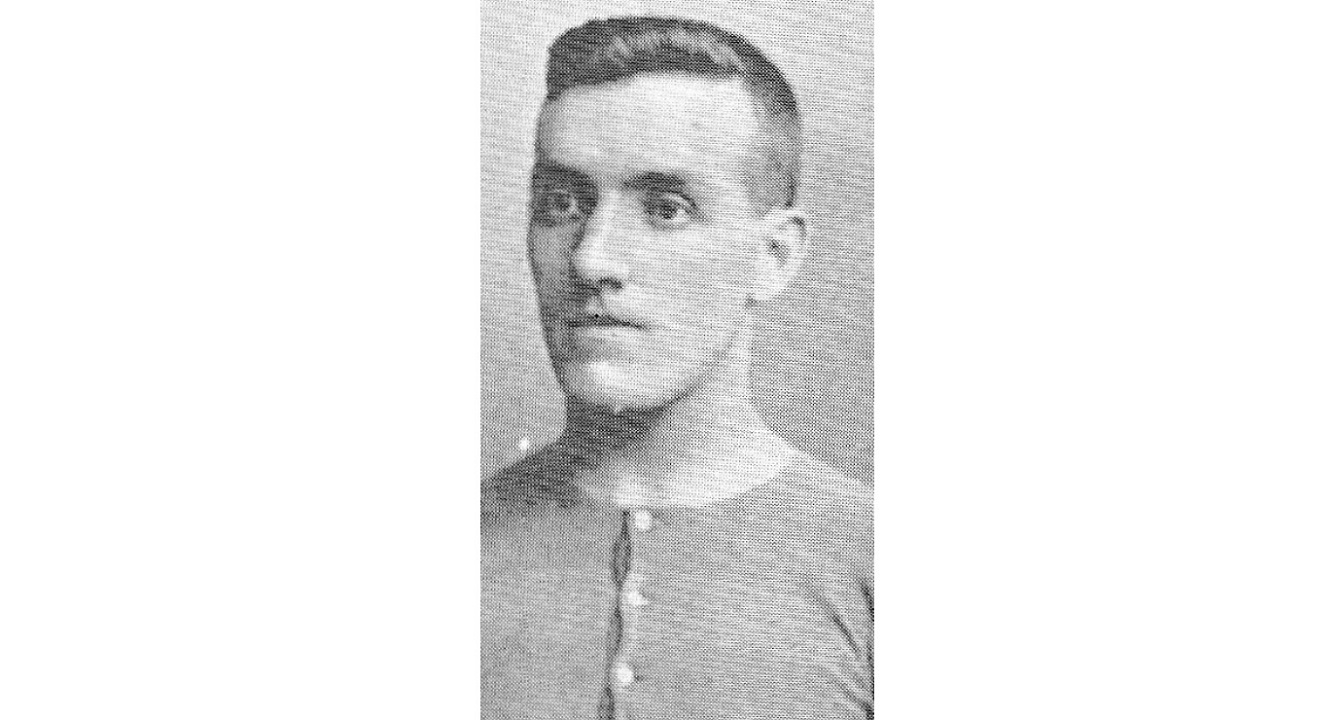We delve deep into The British Newspaper Archive to look at cuttings that shed light on West Ham United’s history...
The 1908/09 season was a bizarre one for West Ham United.
At home at the Boleyn Ground, the Hammers were virtually unstoppable, winning 16 of their 20 Southern League First Division fixtures, scoring 40 goals and conceding just 13.
On the road, however, the Irons literally could not win a game, drawing three and losing a staggering 17 of their league matches away from east London. In a near mirror-image of their home form, West Ham scored just 13 goals and conceded 47.
Incredibly, Syd King’s men collected 32 of their 35 points in Upton Park and, despite putting together a home record bettered only by runners-up Swindon Town, finished 17th in the 21-club table.
Forwards Danny Shea (two) and Jack Foster both hit hat-tricks for West Ham that season, with all three unsurprisingly being scored at the Boleyn.
Foster netted his treble in spectacular style on 10 October 1908, scoring three goals in the final ten minutes as the Londoners came from behind to snatch a 3-1 home win over Portsmouth.
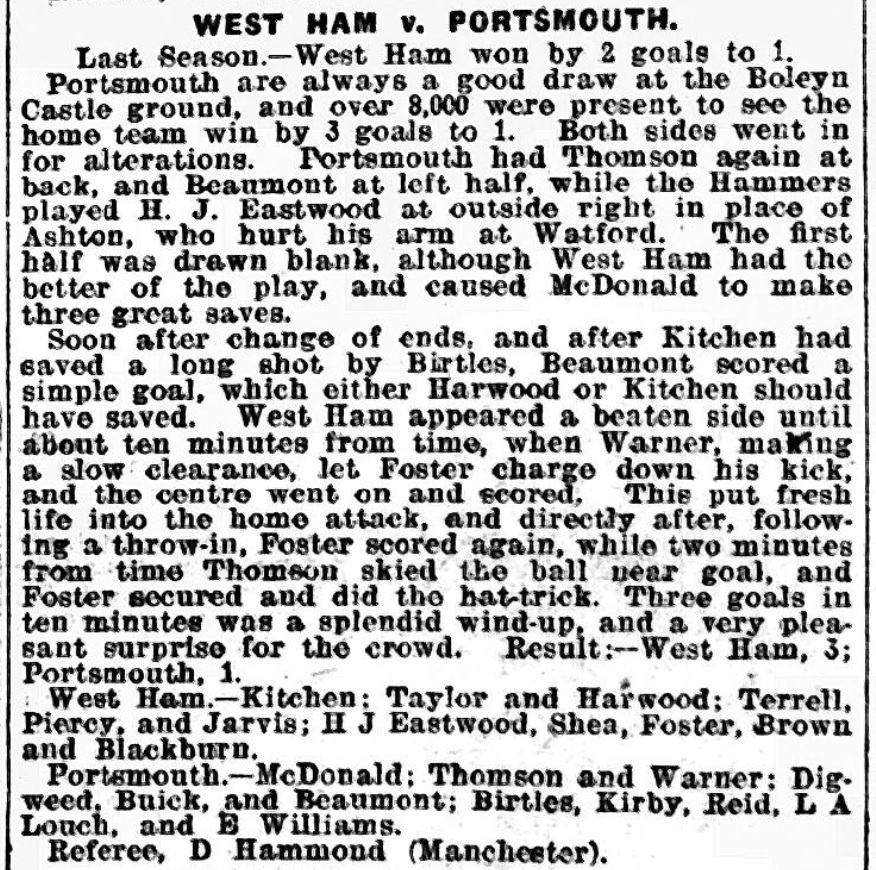
While the prolific England international Shea’s goalscoring exploits have been regularly documented, Foster’s are certainly less well-known in Hammers history.
Born in the village of Rawmarsh in South Yorkshire, Foster was not only a keen footballer but a member of the local parish church choir.
On the pitch, he initially played for local amateur club Rotherham Church Institute and Midland League side Thornhill United. The latter club was renamed Rotherham County in 1905, elected to the Football League alongside West Ham in 1919 and merged with Rotherham Town to form Rotherham United in 1925.
In 1901, aged 23, Foster joined Football League Second Division side Blackpool. He scored six goals in 28 league appearances for the Lancashire club in 1901/02 before returning home to join the aforementioned Rotherham Town in the Midland League.
Foster’s tour of the country restarted in 1906 when he moved to West Ham’s Southern League First Division rivals Watford.
The 5’7 striker certainly showed the Hammers his prowess when he netted for the Hornets in a 1-1 draw at the Boleyn Ground on 1 December 1906, then scored both goals in Watford’s 2-0 win in the reverse fixture at Cassio Road on 6 April 1907. He finished as the Hornets’ leading scorer in both 1906/07 and 1907/08, despite only playing half of the second campaign.
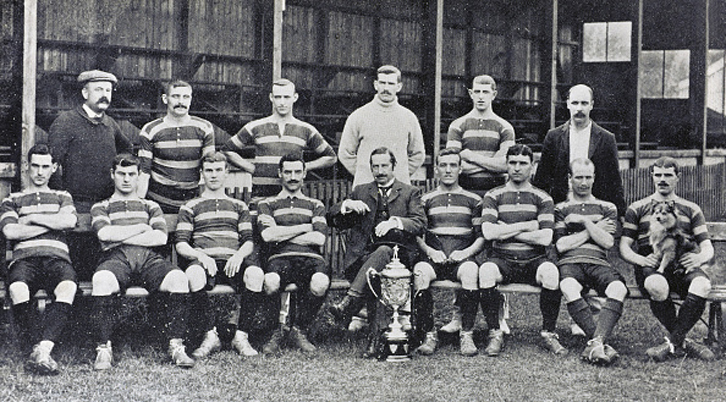
Days after failing to score in West Ham’s 2-0 win over Watford on 30 November 1907, Foster joined Football League First Division Sunderland for a fee of £800 and scored on his debut in a 2-0 win over Birmingham City.
Foster lost his place at Roker Park in early 1908. Around the same time, his health deteriorated and his doctor reportedly urged him to move back south to benefit from the warmer climate. He did so in May that year, when he joined Southern League West Ham.
Writing in the Athletic World, Cycling and Football Chat newspaper on 5 August 1908, columnist ‘Dunelmian’ was surprised a player of such stature had dropped two divisions.
“As to the new arrivals, many come to the South with excellent credentials, and I confidently anticipate several of them making further history for themselves,” Dunelmian purred. “Foster, of Sunderland and late of Watford, should be a decided acquisition to the ranks of the Hammers. He is of the sturdy type, and of the physique necessary for a centre-forward.
“It is a surprise to me that Sunderland let him go after paying £800 for his transfer from Watford, and the use of his services for practically the latter half of the past season only.
“Knowing the class of player who is required for Sunderland’s style of play, no-one could be more surprised than I was that Foster did not prove the player they wanted.
“Still, the Northerners’ loss will no doubt be the Southerners’ gain, and I for one predict a good season for Foster in the ranks of the Hammers.”
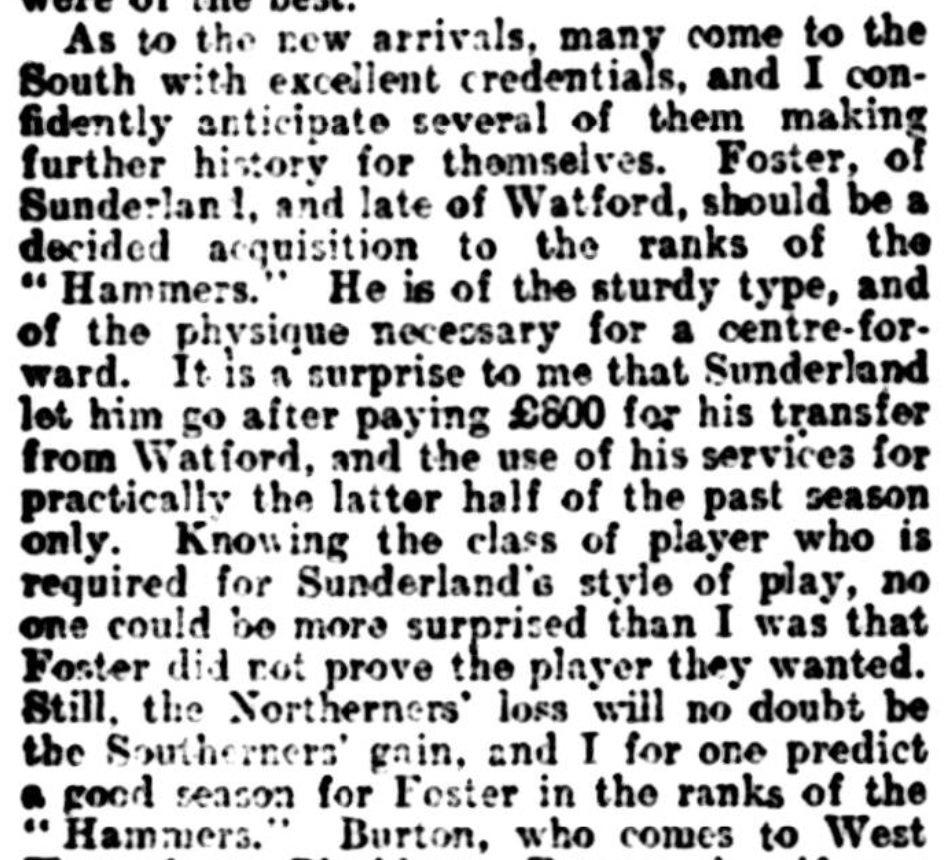
As it turned out, Dunelmian was half-right, as Foster enjoyed a good half-season with West Ham. He scored nine goals in 15 Southern League appearances, including a debut strike in a home win over Queens Park Rangers and his hat-trick against Portsmouth, but then lost his place to former The Wednesday striker Walter Miller in January 1909.
Foster departed on 2 March 1909, when the Morning Leader reported: ‘At the Charterhouse Hotel yesterday afternoon the final arrangements were made between West Ham and Southampton for the exchange of Foster and [Frank] Costello. The Saints wanted a centre-forward and West Ham an inside-left, and this originated the negotiations.”
So it was that a short but prolific Hammers career was over.
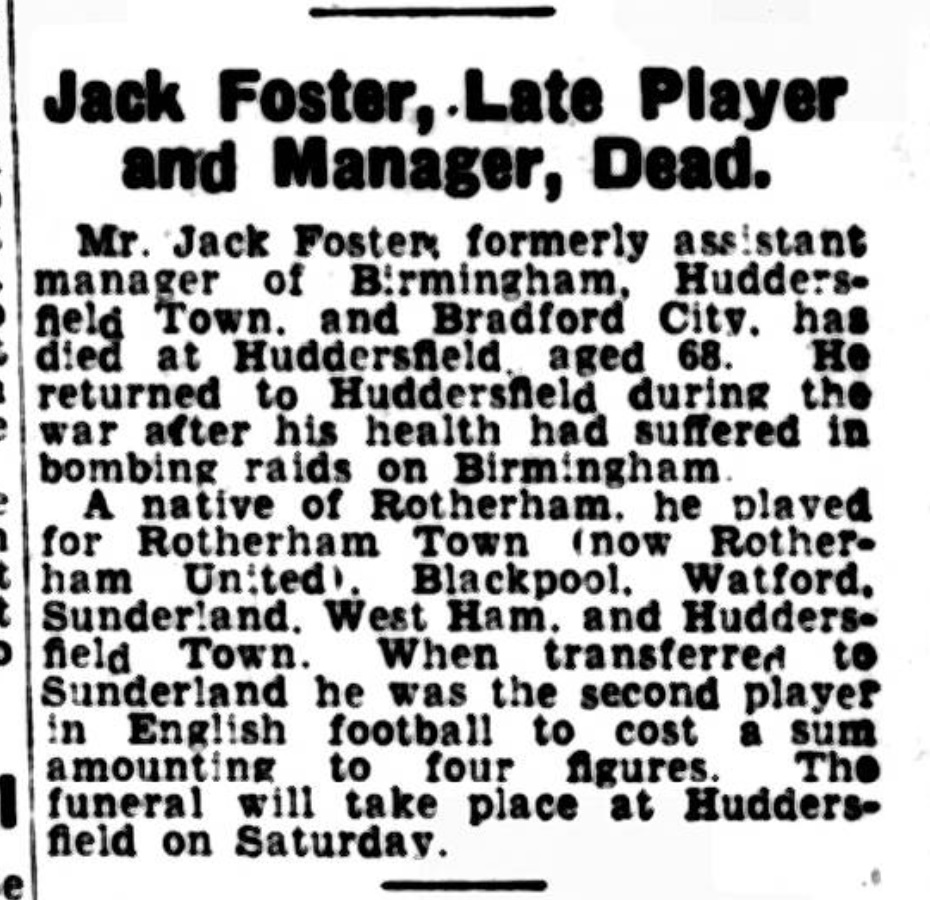
Foster only remained with Southampton for a few months before returning to Yorkshire with Midland League Huddersfield Town, where he netted 25 goals in 1909/10.
He ended his playing days with non-league Castleford Town and Morley, combining his football with work as a chimney sweep.
He rejoined Huddersfield as assistant trainer in 1912, then served as assistant manager at Bradford City in the 1920s and as chief scout for Portsmouth and Birmingham City in the 1930s.
Foster’s health reportedly suffered during bombing raids on Birmingham during the Second World War and he returned to Huddersfield, where he died on 5 February 1946, aged 68.

